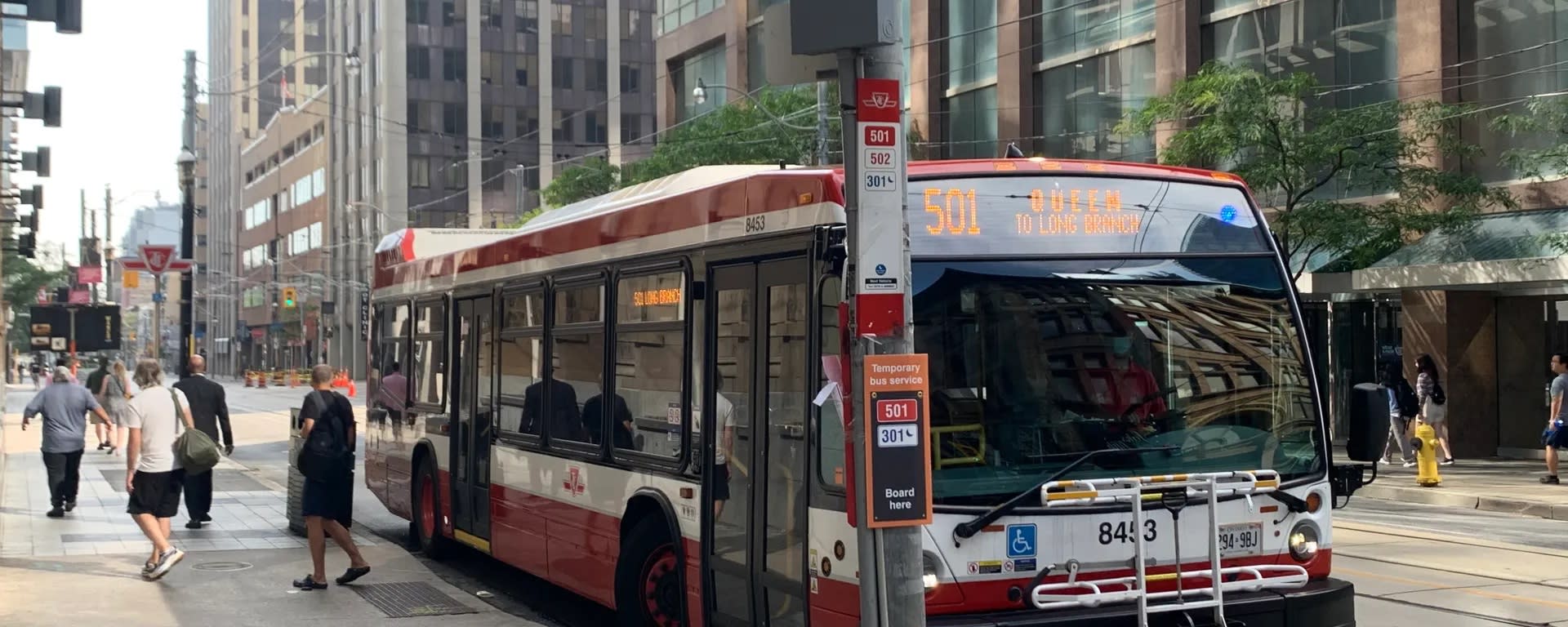Ontario Line connections that will reduce travel times
Metrolinx News explores communities to demonstrate how the line will deliver faster travel.
Feb 24, 2022
Do you remember rush hour before COVID?
At subway stations across Toronto, crowds of people walked briskly to catch the next train.
Those fortunate enough to live within walking distance entered in a steady stream, but the big rushes came when buses and streetcars unloaded people connecting from the subway.
In fact, about 40 per cent of TTC subway riders walk to their home station, with the rest generally connecting from other forms of transit.
Subway planners design routes to maximize these connections in addition to offering station-to-station time savings.
The Ontario Line will stretch 15.6-km from a new station at the Ontario Science Centre to the existing Exhibition GO Station. At the northeast end, the Science Centre station will attract riders connecting from neighbourhoods along the new Eglinton Crosstown LRT and TTC bus routes.
Want to know more about the Ontario Line? Just click here.
The Ontario Line will offer more than 40 transit connections across 15 stations. This will do more than shave time off commutes – it will open up the city by making a variety of trips, for business and pleasure, much easier than they are today.
Here are some examples.
Cutting the corner from Scarborough
Travelling on the TTC Line 2 subway from Scarborough into the financial district will be easier than ever once the Ontario Line is completed.
A new transfer under Danforth Avenue at the current Pape Station will make getting downtown easier by offering an option that bypasses the Bloor-Yonge transfer from Line 2 to Line 1.
A TTC subway stops to pick up passengers. (TTC photo)
From Pape, a route that gently curves towards downtown (with fewer stations) will cut five minutes off the trip and avoid crowding and congestion at Bloor-Yonge station.
Speeding up travel times from Etobicoke
Connections between GO trains and the Ontario Line at Exhibition Station will give residents of Etobicoke (and communities to the west) a new way to reach Toronto’s downtown core.
A commuter who gets on a GO train in Mimico, heading towards the busy corner of Queen and Spadina, will save 18 minutes by connecting to the Ontario Line at Exhibition.
Exhibition Station will be a major transfer hub for the Ontario Line. (Mike Winterburn image)
A DVP detour you will actually like
Avoiding a drive on often congested highways like the Don Valley Parkway (DVP) is one of the best reasons to take public transit.
If you’re stuck in traffic on the DVP, it’s easy to see how densely populated the neighbourhoods surrounding it are, with many apartment towers located on both sides of Eglinton Avenue and into the Thorncliffe Park neighbourhood. This part of the city is not currently served by the subway, but that’s about to change.
Example of the densely populated areas near the Ontario Line route in Toronto. (Mike Winterburn photo)
When the Eglinton Crosstown LRT opens, it will offer a new east-west rapid transit route.
But once the Ontario Line opens, a new north-south connection will link up with the Eglinton Crosstown LRT and bus routes at the new Science Centre station. Commute times to downtown will be reduced by 34 per cent for people living near the future Crosstown O’Connor Stop near Victoria Park and Eglinton.
An aerial view of the Eglinton Crosstown Station under construction at the Ontario Science Centre. (Metrolinx photo)
It now takes 41 minutes to reach Queen and Yonge, but once the Ontario Line is completed, that will be down to only 27 minutes.
For people living near Eglinton and Don Mills, a ride on the whole length of the Ontario Line from the Science Centre to Exhibition Place for a Toronto FC game or Canadian National Exhibition will take 30 minutes or less, compared to 70 minutes it takes on transit today.
By the numbers
The Ontario Line offers more than 40 connections at its 15 stations including:
- Lakeshore West, Lakeshore East, and Stouffville GO train services
- Line 1 and Line 2 TTC subways
- Line 5 (Eglinton Crosstown LRT)
- Streetcars at 10 stations
- Buses at 12 stations
By offering new transfer points on the way into downtown Toronto, the Ontario Line will reduce crowding at Union Station by up to 14 per cent, and at Bloor-Yonge by up to 22 per cent, during the busiest hour of the day. That’s about 14,000 people at each station.
All of these connections will give riders more choices, contributing to a network effect that will encourage more people to use public transit through Toronto and the Greater Golden Horseshoe.
To learn more about the Ontario Line, visit Metrolinx.com/OntarioLine.
by Mike Winterburn Metrolinx communications senior advisor, David King manager in the Metrolinx Capital Projects Group
